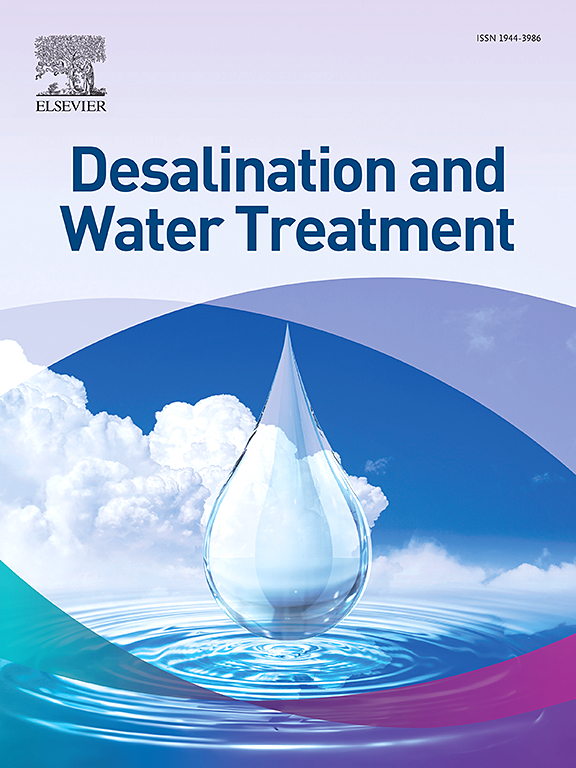Grapevine wood biomass as a new bio-adsorbent for methylene blue: equilibrium, thermodynamic, kinetic, and isotherm analyses, both linear and non-linear
IF 1
4区 工程技术
Q4 ENGINEERING, CHEMICAL
引用次数: 0
Abstract
Recent studies have focused a significant amount of attention on the problem of dyes in water because of their adverse outcomes for the environment and people’s life. In the current work, the adsorption capacity of the sawdust of grapevine wood (GVW) from agricultural waste was employed as a new inexpensive, and green biosorbent via a batch adsorption process. Sulfuric acid was applied to grapevine wood to activate the sorbents for methylene blue (MB) elimination from the solution medium under varied parameters, including temperature, pH, original MB content, contact time, and adsorbent dimensions. The optimum capacity for adsorption ( q max ) of 220.51 mg·g –1 at 293 K was obtained after 180 min of solid/liquid contact with 1 g·L –1 activated grapevine wood (GVWA) sawdust. The Freundlich and pseudo-second-order systems were given the optimal isotherm and kinetic results for MB biosorption onto GVWA sawdust using linear and non-linear regression techniques. The findings for MB biosorption exhibit that non-linear regression was the best approach to choosing the optimum kinetic and isotherm models. The calculated standards for entropy change, standard enthalpy change, and standard Gibbs free energy change demonstrated that the adsorption dynamic was exothermic, spontaneous, and advantageous. Our findings suggest that sustainable and cost-effective GVWA is a suitable candidate for removing emerging contaminants like MB from contaminated waters.葡萄木生物质作为亚甲基蓝的新型生物吸附剂:平衡、热力学、动力学和等温线分析,包括线性和非线性
由于水中染料对环境和人类生活的不良影响,近年来的研究已经引起了人们的极大关注。本研究利用农业废弃物中葡萄藤木屑(GVW)的吸附能力作为一种新型廉价、绿色的生物吸附剂。在不同的温度、pH、MB原始含量、接触时间和吸附剂尺寸条件下,对葡萄藤木进行硫酸活化,使吸附剂从溶液介质中去除亚甲基蓝。1 g·L -1活性葡萄藤木屑在293 K条件下,固液接触180 min,最大吸附量(q max)为220.51 mg·g -1。利用线性和非线性回归技术,给出了在Freundlich和拟二阶体系下吸附甲基溴的最佳等温线和动力学结果。研究结果表明,非线性回归是选择最佳动力学模型和等温模型的最佳方法。熵变、标准焓变和标准吉布斯自由能的计算表明,吸附动力学是放热的、自发的、有利的。我们的研究结果表明,可持续和具有成本效益的GVWA是去除污染水中新出现的污染物(如MB)的合适人选。
本文章由计算机程序翻译,如有差异,请以英文原文为准。
求助全文
约1分钟内获得全文
求助全文
来源期刊

Desalination and Water Treatment
工程技术-工程:化工
CiteScore
2.20
自引率
9.10%
发文量
0
审稿时长
5.3 months
期刊介绍:
The journal is dedicated to research and application of desalination technology, environment and energy considerations, integrated water management, water reuse, wastewater and related topics.
 求助内容:
求助内容: 应助结果提醒方式:
应助结果提醒方式:


